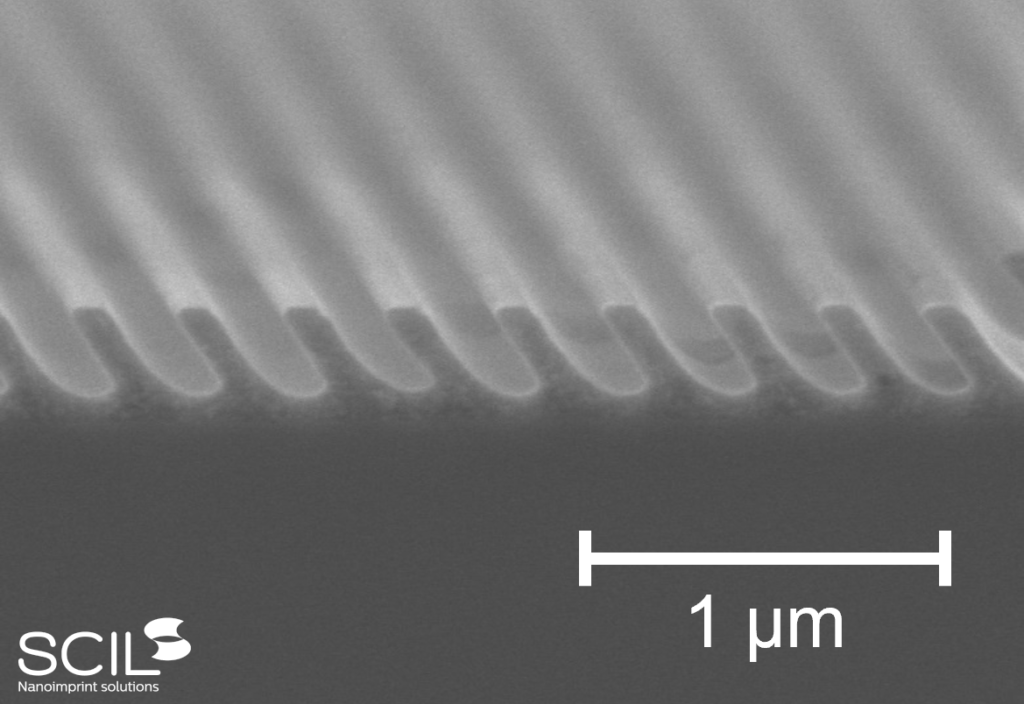Augmented Reality
In recent years, efforts have been increased to develop state-of-the-art augmented reality (AR) technology. AR integrates images, graphics, and other information into the user’s real world. Playing with digital elements in the real world, visualizing how clothing or furniture fit before buying them, or looking up information in real-time about the things around you, are some of the applications that AR can offer.

The research for cutting-edge devices is based on optical waveguides with binary and slanted gratings. The light travels through the gratings, reflecting but also diffracting. This diffraction depends on the size and orientation of the gratings and the material refractive index. The use of high refractive index materials and proper dimension slanted gratings produce the suppression of some diffraction orders, maximizing efficiency. But some nanoimprinting technologies find a big issue during the release. This critical step causes deformation which leads to low reproducibility.

No grating deformation
Meanwhile, other technologies require complex steps, employing SCIL, slanted grating fabrication can be performed in a single step. Our stamp is rigid enough to create nanostructures with no deformation. With our technology, the printing and direction of the release do not influence the quality and yield.
If you want to enhance your augmented reality devices, don’t hesitate to contact us. We are happy to discuss our cutting-edge technology and the endless possibilities it can bring to your business.